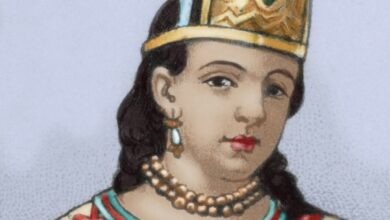The Migratory Crisis Makes the Spanish Enclaves in Africa a Cemetery
The two Spanish cities in African territory, Ceuta and Melilla, are a strategic position for the European country but also a problem amplified by the migration crisis.

Photo: Youtryandyoutry
LatinAmerican Post | Luis Angel Hernández Liborio
Listen to this article
Leer en español: La crisis migratoria hace de los enclaves españoles en África es un cementerio
The autonomous city of Melilla has once again made the news and again due to immigration, at least 23 people died on Friday, June 24, while trying to illegally cross the city fence. The other Spanish autonomous city in Africa, Ceuta, has also been the object of waves of migrants who try to cross its limits and who put in check the different levels of authority in Spain that act against the phenomenon, sometimes even in a contradictory way.
Why does Spain Maintain Territories in Africa?
The decolonization of Africa took place in the second half of the last century, but not all the processes were simple, some left power vacuums and gave rise to important problems. Spain abandoned its last colony, Western Sahara, in 1976, which was in dispute between Morocco, Mauritania, and the Polisario Front (front for the liberation of Western Sahara). However, Spain still has some territories left in Africa, the least important being the old island (now a rock) of Vélez de la Gomera, the Chafarinas Islands, and the Alhucemas Islands. And those of great importance are Ceuta and Melilla, cities that have autonomous status, which places them above the common municipalities in Spain but below the Autonomous Communities.
Ceuta and Melilla have been possessions of Spain for almost 500 years. Of Portuguese origin, Ceuta obtained it as a product of the ephemeral dynastic union with Portugal (1580-1640), when the Portuguese abandoned the union, Ceuta decided to remain with the Crown of Spain. Melilla, for its part, was conquered in 1497 by the Catholic Monarchs in their advance through Africa. Since then, Spain has defended its sovereignty over both cities, long before the existence of Morocco, a country that claims both the "minor" territories, as well as Ceuta and Melilla. As a curious fact, Spain itself is a "victim" of an enclave in its territory, Gibraltar, which also claims the United Kingdom.
The Moroccan Claim and Pedro Sánchez's Strategy
If Spain defends its sovereignty over Ceuta and Melilla by appealing to ancient history, Morocco can also do so. Moroccans appeal to Great Morocco, an image of the territorial and cultural heritage of the different peoples who settled in North Africa that including parts of the territories of neighboring countries, as well as the Spanish enclaves in Africa. Morocco's claims have not been taken into account at the UN because Ceuta and Melilla were never territories in the process of decolonization, which complicates any attempt to obtain them in this way. This has given rise to diplomatic conflicts and "friction" between Moroccan and Spanish forces.
Morocco has also done little or nothing to stop the advance of migration to Ceuta and Melilla as a way of putting pressure on Spain. Because of this, Pedro Sánchez has sought ways to get along with Moroccans and obtain their support to control migratory flows. His strategy consisted of recognizing Morocco's proposal for an "autonomy" of Western Sahara under Moroccan sovereignty, thus breaking with the neutrality that Spain had had in the conflict. According to the Elcano Royal Institute, in return, it has requested the unconditional recognition of Ceuta and Melilla as part of Spain. Although relations with the African country improved, the truth is that the Spanish government earned harsh criticism, including that of Unidas Podemos, the party that gave its support to form the coalition that allowed Sánchez to govern.
You can also read: Figures That Overshadowed Emmanuel Macron In France
Why Cross to Ceuta and Melilla?
This is the big question about migration to Ceuta and Melilla, why cross to these two enclaves that have no land connection with Spain? As mentioned above, the different levels of authorities in Spain sometimes act in a contradictory way, while on the one hand there is great surveillance, fences up to 10 meters high in each city with state-of-the-art security systems, on the other hand, there are also humanitarian programs that protect and support the migrant population. This prevents the immediate deportation (which has generated public debate) of people who cross. For thousands of Africans who year after year try to cross the fences of Ceuta and Melilla, reaching these small territories implies an opportunity for a change of life. Upon arrival, they have rights that the Spanish authority must respect, a process that allows them to spend some time in the enclaves and, in some cases, go to mainland Spain, obtain residence permits and, in short, a life with rights, although it should be noted that the vast majority are returned to Morocco.
The Critical Moments of the Migration to the Spanish Enclaves
What has happened these days in Melilla is not a unique event, both cities have a history of tragedies and human rights violations due to attempts to enter them. In 2013, a person died when he fell from the top of the fence in Melilla, a risk that was added to confronting the Civil Guard. Not always being able to cross the fences, migrants try to enter through the beaches, a dangerous practice that in 2014 claimed the lives of 15 people in the so-called "Tarajal Tragedy" in Ceuta, according to the Spanish Commission for Refugee Aid. As on the way to the United States, caravans tend to form in Morocco that try to cross the fences into Spain en masse, some with hundreds and others with thousands of people, few of whom will be able to enter and even fewer will be able to enter Spain freely and the European Union.




